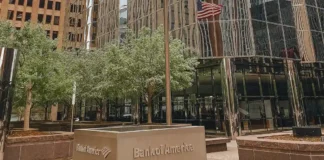The US Federal Reserve said on January 24 that a funding lifeline created for banks in 2023 after the collapse of Silicon Valley Bank threatened to ignite a wider financial crisis would be closed as scheduled in March.
Apparently, the Fed is also going to immediately raise the interest rate on new loans from the Bank Term Funding Program- BTFP for the remainder of its life, thereby effectively ending what has gone on to become a popular and profitable arbitrage opportunity when it comes to U.S. lenders.
It is well to be noted that the closure of the program on March 11 was given by Fed officials as fear in the banking system abated.
The BTFP happened to be designed in that emergency situation, said the Fed’s vice chair for supervision, Michael Barr, earlier in January, referring to the banking sector panic that was triggered by the rapid collapse of SVB. It was designed for emergencies to say that they want to ensure that banks, as well as creditors of banks and depositors within the banks, understand that banks happen to be having the liquidity they require.
Apparently, the Fed went on to launch the BTFP amid a historic run when it comes to deposits as well as other market stress after the SVB as well as Signature Bank failed in quite a lightning-fast fashion, thereby tapping emergency lending powers the central bank could roll out – with the nod of the Treasury secretary, under unusual and exigent circumstances.
Although the Fed said that it would continue making fresh loans until the program ended, it also announced that on January 25, it would raise the interest rate that the banks would pay when it came to any new Fed lending.
The Fed said that effectively immediately, the interest rate on new loans will no longer be lower than the interest rate when it comes to reserve balances on the day of the loan. The end result is an almost 50-basis-point jump in new borrowing costs; the BTFP loan rate happened to be 4.93% on January 23, while reserve balances at present go on to reap 5.40%.
The generous terms that were inked before helped push the use of the program, as usage ground consistently higher in spite of no real signs of market distress. The loans that were outstanding as of Jan. 17 stood at $161.5 billion, as per the Fed data, and the average weekly growth over the last six weeks of almost $5.6 billion happens to be the highest since early May 2023.
However, it also meant that banks could borrow from BTFP as well as deposit funds back at the Fed, thereby earning a higher rate from the interest the central bank goes on to pay on reserve balances.
The associate director of research at Yale School of Management’s Program on Financial Stability, Steven Kelly, remarked before the expiration was announced that he suspects the Fed is not happy with the present state of BTFP activity.
He added that only due to the fact that there happens to be a genuine economic need, at least for some, and it is indeed nice to get a hedge from the Fed, they should not necessarily be in the business when it comes to providing hedges outside of crisis time, and the fact is that they are not really in crisis time.



















